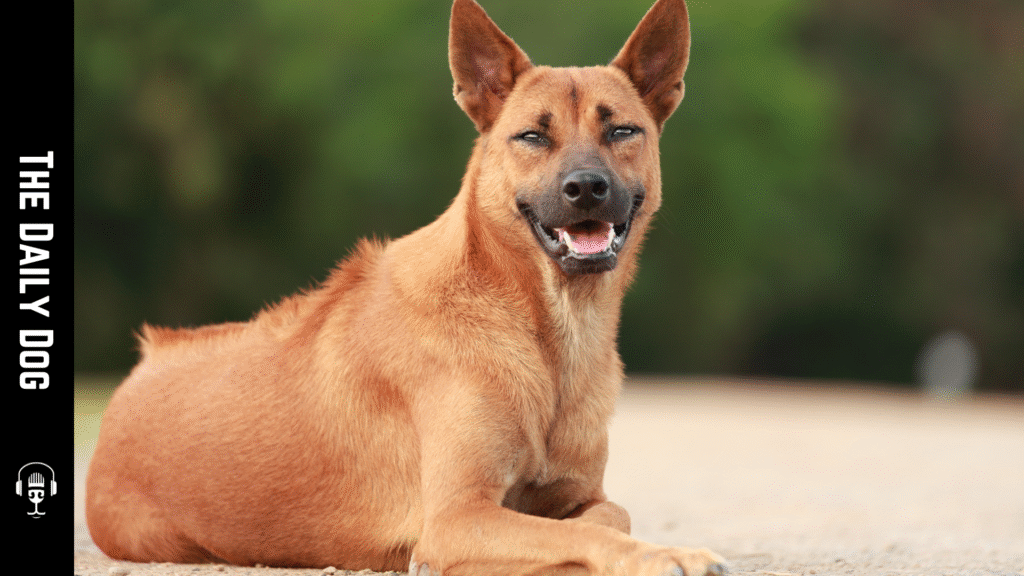The Thai Ridgeback is a striking and unique breed that embodies agility, loyalty, and independence. Known for its distinctive ridge of hair along its back and its proud, alert demeanor, this breed has captivated dog lovers worldwide. Whether you’re considering adding a Thai Ridgeback to your family or simply want to learn more about this fascinating breed, this article provides an in-depth look at its history, characteristics, temperament, care needs, and more.
Origins and History of the Thai Ridgeback
The Thai Ridgeback’s roots trace back centuries in Thailand, where it has long been revered as a guardian and hunting dog. Historically, these dogs were used by Thai tribes to protect homes, livestock, and property from intruders and wild animals. Their natural agility and keen senses made them exceptional hunters and watchdogs.
Unlike many breeds that have been extensively bred for specific traits, the Thai Ridgeback’s origins are somewhat mysterious. Some theories suggest that they are descendants of ancient pariah dogs, while others believe they have links to early Asian breeds. Their distinctive ridge along the back, formed by hair growing in the opposite direction, is a defining feature that sets them apart.
In recent decades, the breed has gained international recognition, partly due to its unique appearance and formidable guarding abilities. The Thai Ridgeback is now recognized by various canine organizations, including the Fédération Cynologique Internationale (FCI) and the American Kennel Club (AKC), as a breed with a rich cultural heritage and exceptional qualities.
Physical Characteristics of the Thai Ridgeback
A well-built and athletic dog, the Thai Ridgeback exhibits a muscular and balanced physique that reflects its active lifestyle. Here’s a closer look at its physical features:
- Size: Males typically stand between 22 and 24 inches at the shoulder, while females are slightly smaller, measuring around 20 and 22 inches.
- Weight: Adult males typically weigh between 44 and 55 pounds, while females range from 40 to 50 pounds.
- Coat: The breed has a short, smooth, and tight coat that lies close to the skin, providing protection in tropical climates.
- Color: The most common coat colors are solid shades such as black, blue, red, or fawn. Some variations may include brindle patterns.
- Distinctive Ridge: The hallmark of the breed, the ridge, runs along the back and consists of hair growing in the opposite direction. It should be symmetrical and well-defined.
- Body Structure: The Thai Ridgeback boasts a deep chest, strong limbs, and a whip-like tail that adds to its agile appearance.
Their appearance exudes both elegance and strength, making them a captivating sight.
Temperament and Behavior
The Thai Ridgeback is renowned for its independence, intelligence, and alertness. These qualities make them excellent watchdogs, but they also require proper training and socialization to ensure they are well-behaved companions.
Loyal and Protective: Thai Ridgebacks are intensely loyal to their families and can be very protective. They tend to be wary of strangers and may bark to alert owners of any unusual activity.
Intelligent and Curious: As an intelligent breed, they enjoy mental stimulation and problem-solving. They are quick learners but can also be stubborn, necessitating consistent, positive reinforcement training.
Active and Agile: Their athletic build enables them to thrive on physical activity. Without adequate exercise, they may become bored and develop destructive behaviors.
Independent Nature: While they are affectionate with their families, they also value their independence. This trait can sometimes make training a challenge if not approached with patience and consistency.
Socialization Is Key: Early socialization with other animals and people helps mitigate potential wariness or territorial behaviors. Proper socialization ensures they grow into confident and balanced dogs.
Caring for a Thai Ridgeback
Caring for a Thai Ridgeback involves understanding its unique needs and providing a nurturing environment that fosters its physical and mental well-being.
Exercise and Activity Requirements
Being an active and agile breed, the Thai Ridgeback requires daily exercise to keep it healthy and happy. This can include:
- Long walks or jogs
- Play sessions in a secure yard
- Agility training
- Interactive toys
A minimum of 1 hour of daily vigorous activity is recommended. Without sufficient exercise, they may resort to digging, barking, or other unwanted behaviors.
Nutrition
A balanced diet tailored to their age, weight, and activity level is essential. High-quality commercial dog food or a well-prepared homemade diet can meet their nutritional needs. Ensure their meals contain the right balance of proteins, fats, vitamins, and minerals.
Fresh water should always be available. Regular feeding schedules help maintain a healthy weight and digestive health.
Grooming and Coat Care
The Thai Ridgeback’s short coat requires minimal grooming. Weekly brushing with a rubber curry brush or grooming mitt helps remove loose hair and keeps the coat shiny. Bathing can be done as needed, typically every few months.
Regularly check their ears for dirt or signs of infection, trim their nails, and brush their teeth at least twice a week for optimal health.
Health and Medical Considerations
While generally a healthy breed, Thai Ridgebacks can be prone to specific health issues, including:
- Hip dysplasia
- Allergies
- Skin conditions
Regular veterinary check-ups, vaccinations, and parasite control are vital. Responsible breeding also reduces the risk of hereditary health problems.
Training and Socialization Tips
Given their independent and alert nature, the Thai Ridgeback benefits from early and consistent training. Here are some tips:
- Start Early: Introduce socialization and basic commands as early as possible.
- Use Positive Reinforcement: Reward-based training methods are most effective, considering their intelligence and sensitivity.
- Be Consistent: Set clear boundaries and routines.
- Exposure to Various Environments: Help them become confident and well-adjusted.
- Leash Training: Since they are agile and intense, proper leash training is essential to prevent pulling.
Patience and persistence are key when training this breed. They respond well to leadership and positive interactions.
The Ideal Owner for a Thai Ridgeback
The Thai Ridgeback is best suited for experienced dog owners who understand and appreciate the breed’s unique traits. They thrive in active households where they receive plenty of mental and physical stimulation.
Ideal owners should be:
- Committed to consistent training and socialization
- Able to provide ample exercise
- Capable of establishing firm, fair leadership
- Interested in engaging in activities such as agility, obedience, or hiking
They may not be suitable for first-time dog owners or those with limited time for daily exercise and training.
Why Choose a Thai Ridgeback?
There are numerous reasons why the Thai Ridgeback stands out among dog breeds:
- Unique Appearance: The distinctive ridge and muscular physique make them visually striking.
- Loyal Guardian: Their protective instincts make them excellent watchdogs.
- Active and Agile: Perfect for active families or individuals who enjoy outdoor activities.
- Cultural Heritage: Owning a Thai Ridgeback connects you to an ancient Thai tradition.
Their combination of elegance, strength, and intelligence makes them a rewarding companion for the right owner.
The Thai Ridgeback is a remarkable breed that embodies agility, loyalty, and independence. Its striking appearance and alert nature make it an excellent guardian and a loyal family member for those prepared to meet its needs. Providing proper socialization, training, and exercise ensures this breed can thrive and become a cherished companion.
If you’re looking for a dog that combines agility, intelligence, and a touch of exotic charm, the Thai Ridgeback might just be the perfect fit. Embrace the journey of caring for this extraordinary breed, and you’ll find a loyal friend and protector for life.
We offer a FREE Strategy Call.
Click on the graphic to learn more
Read More










